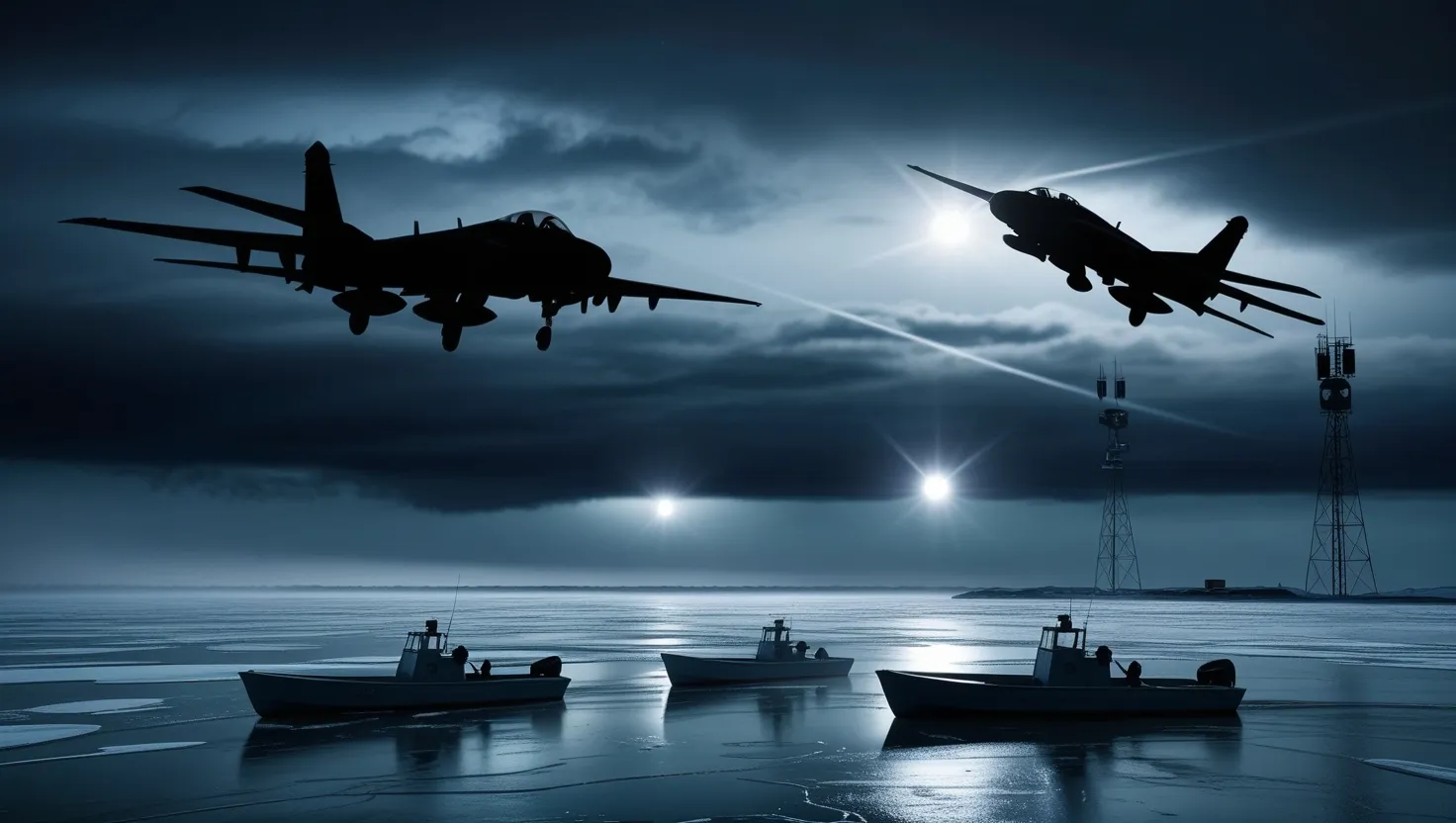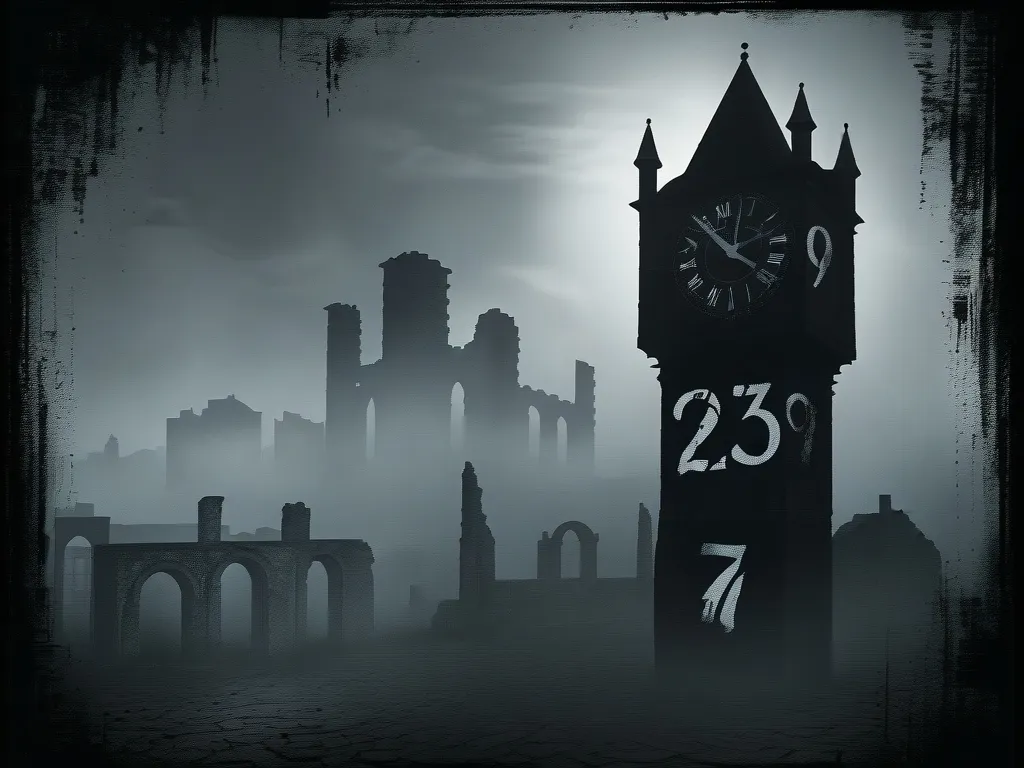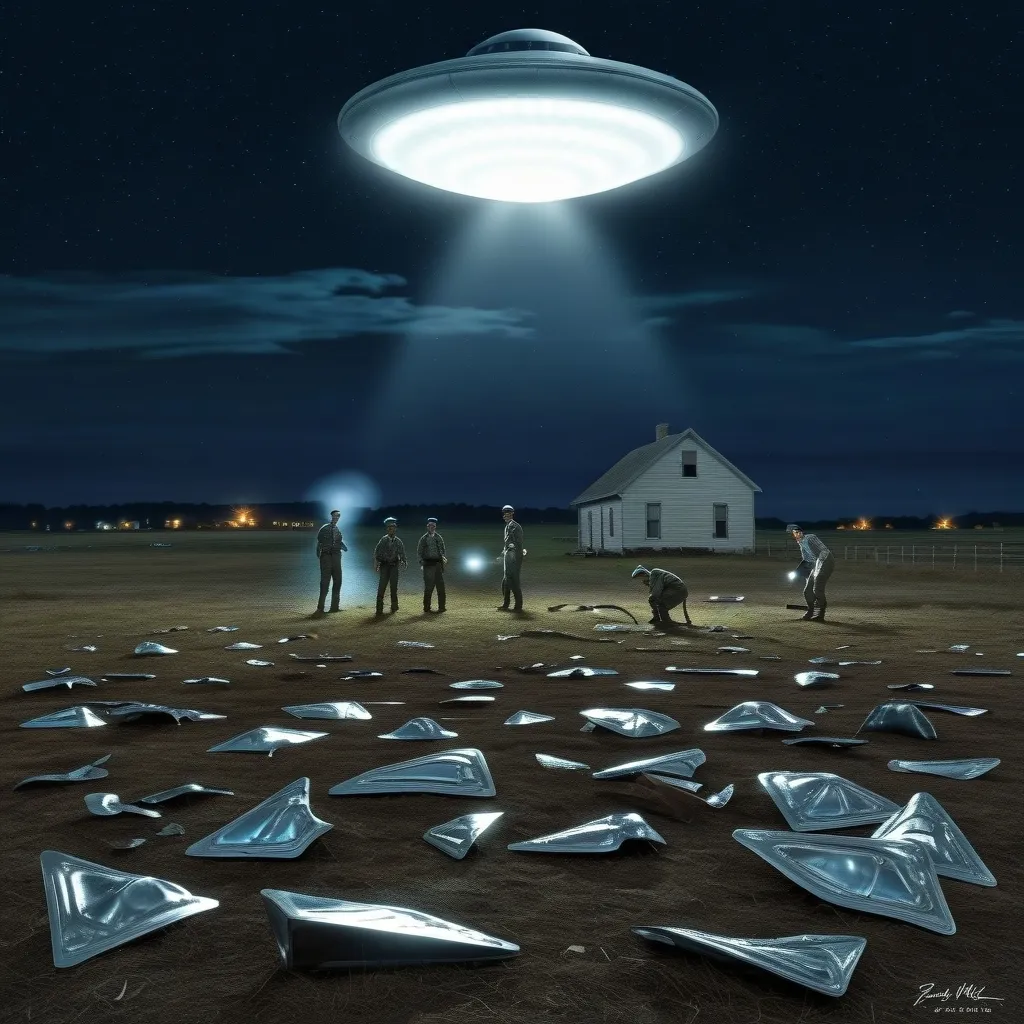On a cold night above Lake Superior, a military jet disappeared. The Kinross Incident, as it’s known, was brief, dramatic, and filled with contradictions. Two airmen vanished while chasing a radar blip; an unexplained anomaly that challenged the best minds of 1950s aviation. Let’s walk through this case—not just as a record of what happened, but as a living puzzle, tugging at the edges of official narrative and collective memory.
Imagine being at Kinross Air Force Base that evening: the air thick with tension as Ground Intercept radar picks up an unknown target. It’s moving unusual, doesn’t respond to radio calls, and sits squarely in restricted airspace. The response is textbook—scramble the closest jet. Within minutes, First Lieutenant Felix Moncla and Second Lieutenant Robert Wilson rocket skyward in their F-89C Scorpion, ordered to intercept whatever is out there.
What followed remains one of the most debated moments in American military history. Two radar returns—the jet and the unknown—merge over the lake. But instead of the jet trailing its quarry, both vanish from the radar. Search teams comb icy shores for wreckage; nothing is ever found. I’m left asking: did they collide? Disintegrate? Or was the explanation something even stranger?
Here’s where things begin to fracture. The official report claims the jet crashed while chasing a wayward Canadian aircraft. Trouble is, Canada quickly denied having any planes in the area. Sudbury airport, supposedly the destination, was under construction. If the explanation hinged on a simple airspace confusion, how did such a basic mix-up make its way into formal reports? Why give one story to the press, then retract it in favor of another? “The most beautiful thing we can experience is the mysterious. It is the source of all true art and science.” — Albert Einstein
Listen closely to Moncla’s last transmission. He didn’t say he’d identified another jet. Instead, he described a “bright, pulsating light” with no wings or tail. That’s not how pilots describe a conventional plane. His words, cut short on the radio, set off alarms among air defense and fuel the suspicions that something truly unusual was in the sky that night.
Technologists later reviewed the radar data. A civilian engineer pointed out maneuvers performed by the unknown target: it changed altitude nearly instantaneously. I ask myself—what aircraft in 1953 could do that? Even today, sudden jumps in position on radar are rare unless there’s malfunction or deliberate electronic interference. Was this a radar error, clever camouflage, or something truly unknown?
“But what if everything is just a coincidence?” you’ll wonder. That’s the fallback—the crash explanation. The Air Force concluded that spatial disorientation, a sort of pilot vertigo, led to tragedy. It’s not impossible; flying in clouds over Lake Superior can be disorienting, with few visual cues. Yet, Moncla wasn’t a novice. He had over 100 hours in the F-89, a jet he knew well, and three years of flying experience. Vertigo is a risk, but not a likely outcome for an experienced team tracking a radar target in controlled contact with ground support.
As the investigation unfolded, Moncla’s widow received conflicting explanations. One officer told her the jet exploded mid-air. Another said vertigo was to blame. Even the order in which these stories appeared publicly shifted, with newspapers first reporting a vanished jet and later—after official pressure—a supposed crash with a Canadian transport. There was no consensus, just uncertainty. “The truth is rarely pure and never simple.” — Oscar Wilde
What do the radar operators have to say? Later records remember their shock and frustration. For them, two returns merged into one, then disappeared—not splitting apart as physics might predict if there was a mere collision, but simply gone. The search and rescue teams, braving heavy clouds and icy waters, found no trace. No wreckage, no bodies, no clues. I sometimes wonder—if the pilots ejected, could they have survived? Official reports note their rafts and life jackets, but the lake remained silent.
The civilian engineer’s analysis adds yet another twist. According to his review, the unidentified radar target didn’t move like any known jet of the period. It performed abrupt vertical jumps on radar, maneuvers that would tear a standard aircraft apart. If this was electronic jamming or some clever decoy, it would be ahead of its time—1950s avionics didn’t support such tricks.
Did you know that after the incident, the Air Force started recording total interceptions as a training metric? Some now argue that the scramble itself may have been partially routine, a test of readiness. But this mission was anything but ordinary. I’m tempted to ask: Was Moncla’s jet sacrificed for data collection, or was there genuine fear of an unknown intruder?
“I have never thought much of the value of being able to repeat information accurately. I have found that such ability is usually paired with determined stupidity.” — Bertrand Russell
The official file on Kinross remains open. Every so often, theorists revisit the case. UFO researchers call it a classic encounter. Conspiracists see a coverup. Historians pick apart discrepancies in the Air Force’s story. It’s a fascinating example of military secrecy, public curiosity, and our hunger for answers when facing uncertainty.
What stands out to me, reading through decades of articles and recollections, is how the case evolved. Early reporting was direct: a jet vanished chasing an unknown over the lake. As time wore on, explanations rose and fell, shaped by new data, shifting priorities, and changing attitudes toward unexplained phenomena. “We live in a world where there are Phantoms and Shadows and those who hunt them.” — Neil Gaiman
The radar operators, whose job was to track, found their science challenged by something inexplicable. If the unknown blip could maneuver like no known aircraft, what options remained? Advanced Soviet technology? A test flight from a hidden program? Or something more speculative—perhaps an anomaly beyond the reach of mid-century science?
If the story sounds familiar, that’s because it set a pattern—military disappearances with scant evidence, official confusion, and a dogged refusal to accept tidy conclusions. It’s echoed later in other cases, each time feeding public imagination and launching debates in books and documentaries.
Suppose you were tasked with explaining Kinross to a new generation. Would you tell them it was an accident, plain and simple? Or that sometimes, data confounds logic, and perfectly rational people experience events that refuse to be boxed in by standard explanations? “To live in the world of creation—to be a creator, not a creature—man must overcome his fear.” — Rollo May
Maybe it’s what stays unsolved that keeps incidents like Kinross alive. Each claim of a crash met by a denial. Each eyewitness haunted by the memory of two blips converging, then vanishing forever. Decades later, the question lingers: what really happened in those final seconds over Lake Superior?
I suspect that somewhere between technical error, bureaucratic confusion, and inventions yet to be understood, there is room for new ways to look at the Kinross case. By questioning every piece—radar data, official statements, search records, and pilot testimony—we might not find answers, but make peace with uncertainty itself.
So I ask you: What is your instinct? Do you lean toward human error—vertigo in a freezing jet cockpit? Do you favor technology outpacing military readiness? Or are you, like so many before, left waiting for a better explanation—one that might never come, yet refuses to leave the story of Kinross behind?
“When you have eliminated the impossible, whatever remains, however improbable, must be the truth.” — Arthur Conan Doyle
The Kinross Incident reminds us that sometimes the facts do not add up neatly, and the missing pieces force us to question accepted wisdom. It is in these places, between the known and unknown, that true intrigue lives. And sometimes, not even twenty books or a hundred experts can pull the jet, the crew, or the answer back from the cold timeless waters of Lake Superior.






